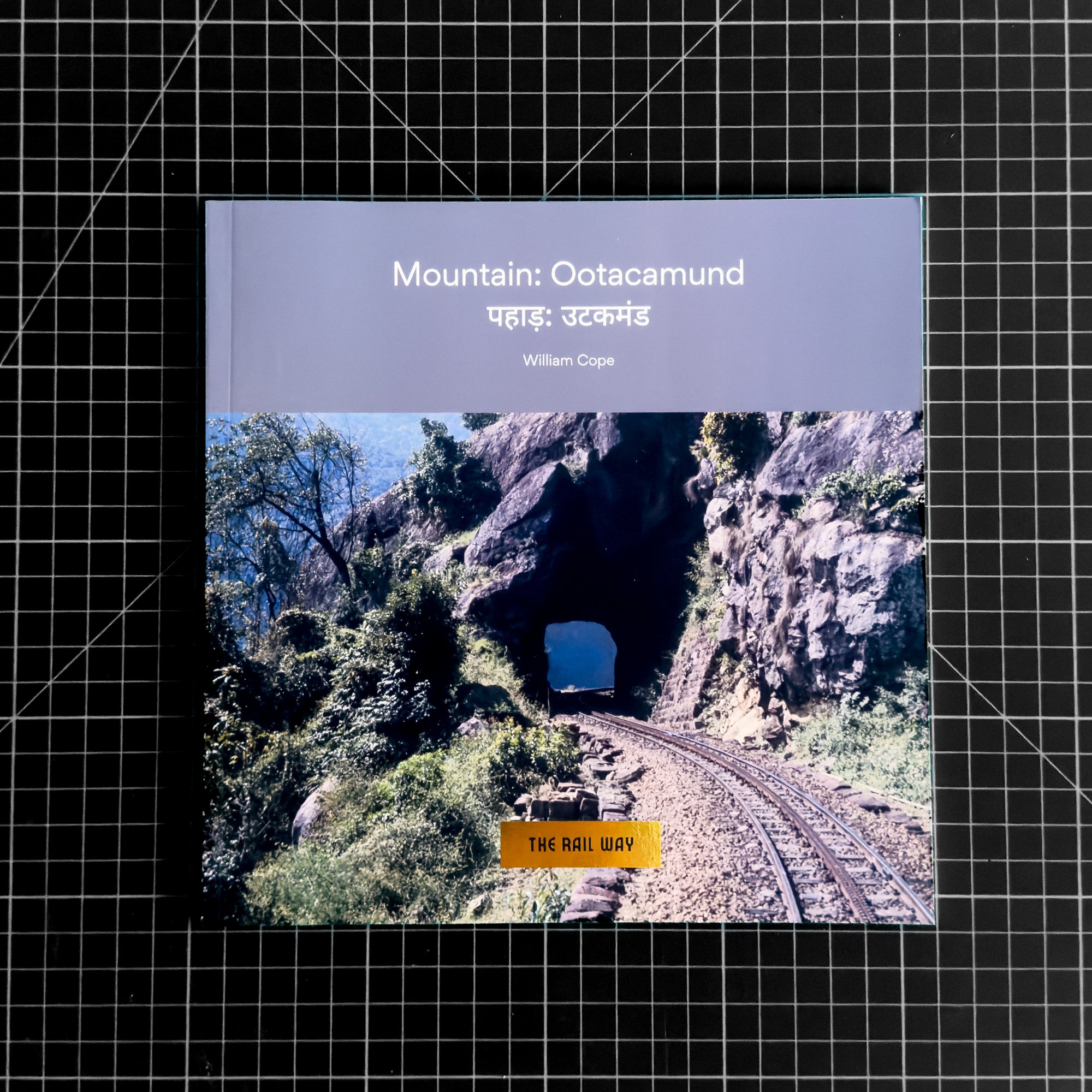Ootacamund, William Cope
Ootacamund is one of a trilogy of books on Indian Mountain railways by William Cope, showing how an essentially horizontal technology can deny the vertical. The journey begins at Madras Central Station with the Nilgiri Express. After an overnight journey of 329 miles, passengers change at Mettupalayam onto the metre gauge Nilgiri Mountain Railway. Four and a half hours, 29 miles and 6,200 feet later, the train arrives in Ootacamund, a former Hill Station of the British Raj.
Each book of the trilogy focuses on an Indian mountain railway: the Darjeeling Himalayan Railway in West Bengal, the Nilgiri Mountain Railway in Tamil Nadu, and the Matheran Hill Railway in Maharastra. In their precipitous landscapes, these three railways are without doubt beautiful. The pictures speak to that. However, in his introductory texts accompanying the photographs, William Cope also explores the often-difficult human stories behind each railway and every image. His question for these lines: what does the railway mean?
——————
William Cope traveled the lines photographed in these books in 1977, 1981, and 2013. His photographs can be found on the internet at The Rail Way.
———
Edition: Limited Edition of 100; numbered and signed
Page Count: 63 pages; 27 photographs
Dimensions: 8” x 8”
Format: Perfect Bound
ISBN: 978-1-962415-02-6
——————
PRESS / LINKS:
Ootacamund is one of a trilogy of books on Indian Mountain railways by William Cope, showing how an essentially horizontal technology can deny the vertical. The journey begins at Madras Central Station with the Nilgiri Express. After an overnight journey of 329 miles, passengers change at Mettupalayam onto the metre gauge Nilgiri Mountain Railway. Four and a half hours, 29 miles and 6,200 feet later, the train arrives in Ootacamund, a former Hill Station of the British Raj.
Each book of the trilogy focuses on an Indian mountain railway: the Darjeeling Himalayan Railway in West Bengal, the Nilgiri Mountain Railway in Tamil Nadu, and the Matheran Hill Railway in Maharastra. In their precipitous landscapes, these three railways are without doubt beautiful. The pictures speak to that. However, in his introductory texts accompanying the photographs, William Cope also explores the often-difficult human stories behind each railway and every image. His question for these lines: what does the railway mean?
——————
William Cope traveled the lines photographed in these books in 1977, 1981, and 2013. His photographs can be found on the internet at The Rail Way.
———
Edition: Limited Edition of 100; numbered and signed
Page Count: 63 pages; 27 photographs
Dimensions: 8” x 8”
Format: Perfect Bound
ISBN: 978-1-962415-02-6
——————
PRESS / LINKS:
Ootacamund is one of a trilogy of books on Indian Mountain railways by William Cope, showing how an essentially horizontal technology can deny the vertical. The journey begins at Madras Central Station with the Nilgiri Express. After an overnight journey of 329 miles, passengers change at Mettupalayam onto the metre gauge Nilgiri Mountain Railway. Four and a half hours, 29 miles and 6,200 feet later, the train arrives in Ootacamund, a former Hill Station of the British Raj.
Each book of the trilogy focuses on an Indian mountain railway: the Darjeeling Himalayan Railway in West Bengal, the Nilgiri Mountain Railway in Tamil Nadu, and the Matheran Hill Railway in Maharastra. In their precipitous landscapes, these three railways are without doubt beautiful. The pictures speak to that. However, in his introductory texts accompanying the photographs, William Cope also explores the often-difficult human stories behind each railway and every image. His question for these lines: what does the railway mean?
——————
William Cope traveled the lines photographed in these books in 1977, 1981, and 2013. His photographs can be found on the internet at The Rail Way.
———
Edition: Limited Edition of 100; numbered and signed
Page Count: 63 pages; 27 photographs
Dimensions: 8” x 8”
Format: Perfect Bound
ISBN: 978-1-962415-02-6
——————
PRESS / LINKS:


